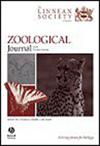New insights into the evolution and biogeography of freshwater planarians on islands in the Tyrrhenian Sea, Western Mediterranean Basin, with the integrative description of a new endemic species from Corsica (Platyhelminthes: Tricladida: Dugesia)
IF 3
2区 生物学
Q1 ZOOLOGY
引用次数: 0
Abstract
A recent study on the freshwater planarian fauna of Corsica and Sardinia established that the formerly presumed single species Dugesia benazzii subsumed a complex of species. In that study, a thorough integrative taxonomic approach, combining molecular, morphological, and karyological data, uncovered the presence of two new endemic species. For the present study, additional samplings were conducted on Corsica, covering several new localities. The data obtained were added to our previous datasets, which included information on specimens collected from both islands. By taking a similar integrative approach to the prior study, we here describe another new endemic species from Corsica, Dugesia xeropotamica. Although our results support the separate status of this new species, it also turned out that the evolutionary relationships among species of the Corso-Sardinian clade remain unclear, because the relationships are not well resolved. Additionally, we corroborate the presence of Dugesia mariae on the Tyrrhenian islets of Montecristo and Molara, representing new records for this group of Dugesia species in the region of the Tyrrhenian Sea. In all, our findings indicate that the evolutionary and biogeographical history of Dugesia species in this region of the Western Mediterranean is more intricate than previously thought.对西地中海盆地第勒尼安海岛屿淡水浮游动物的进化和生物地理学的新认识,以及对科西嘉岛新特有物种的综合描述(扁形动物:Tricladida: Dugesia)
最近一项关于科西嘉岛和撒丁岛淡水浮游动物的研究确定,以前推测的单一物种 Dugesia benazzii 包含一个复合物种。在该研究中,结合分子、形态学和核果学数据的综合分类方法发现了两个新的特有物种。在本研究中,我们在科西嘉岛进行了额外的取样,涵盖了几个新的地点。获得的数据被添加到我们之前的数据集中,其中包括从这两个岛屿采集的标本信息。通过采用与之前研究类似的综合方法,我们在此描述了科西嘉岛的另一个新特有种--Dugesia xeropotamica。尽管我们的研究结果支持这一新物种的独立地位,但也发现科索-撒丁岛支系物种之间的进化关系仍不清楚,因为它们之间的关系并没有得到很好的解决。此外,我们还证实了在第勒尼安海的蒙特克里斯托(Montecristo)和莫拉拉(Molara)小岛上发现了Dugesia mariae,这代表了这组Dugesia物种在第勒尼安海地区的新记录。总之,我们的研究结果表明,地中海西部这一地区的 Dugesia 物种的进化和生物地理历史比以前想象的更加错综复杂。
本文章由计算机程序翻译,如有差异,请以英文原文为准。
求助全文
约1分钟内获得全文
求助全文
来源期刊
CiteScore
6.50
自引率
10.70%
发文量
116
审稿时长
6-12 weeks
期刊介绍:
The Zoological Journal of the Linnean Society publishes papers on systematic and evolutionary zoology and comparative, functional and other studies where relevant to these areas. Studies of extinct as well as living animals are included. Reviews are also published; these may be invited by the Editorial Board, but uninvited reviews may also be considered. The Zoological Journal also has a wide circulation amongst zoologists and although narrowly specialized papers are not excluded, potential authors should bear that readership in mind.

 求助内容:
求助内容: 应助结果提醒方式:
应助结果提醒方式:


